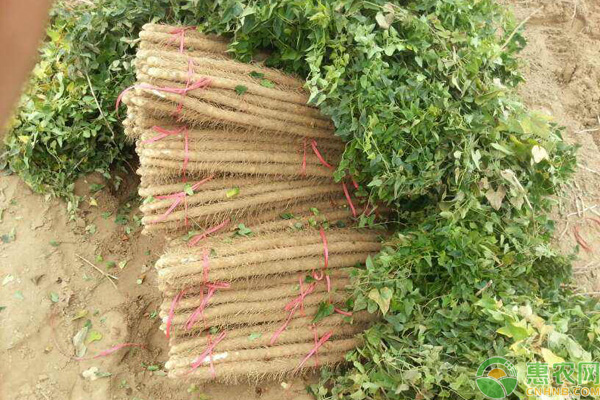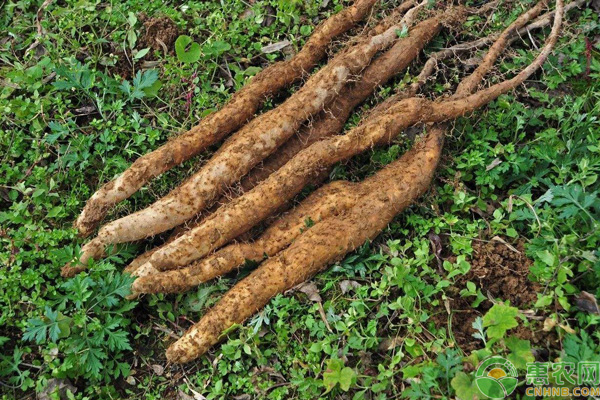Yam is a common vegetable with high nutritional value and has been very popular in the market in recent years. At present, yam is mainly planted in the sandy hills of the shallow hills and riverbanks in southern Shaanxi. However, as the area of ​​yam cultivation continues to expand, pests and diseases are also serious. The following yam pests and diseases and prevention measures compiled by Huinong.com are shared with you. Common yam pests 1. Golden worm, cockroach, cockroach Yam is also called yam. In the process of planting, it is easy to be initially guilty of various insect pests, such as golden worm, cockroach and cockroach. They will drill a lot of holes in the underground tubers of the yam, and sometimes hide in the tubers to sleep. The golden worm has a membranous substance, and the medicinal agent is not easy to penetrate into the body to kill, and the stomach poisoning agent is better. Control method: (1) The land can be deep-turned before winter, at least 25-30 cm deep, so that the wintering larvae can be turned to the surface, frozen, sun-baked or preyed by natural enemies. (2) It can be fertilized, because the decomposed organic fertilizer can change the ventilation and water permeability of the soil, make the crop grow robust, and enhance disease resistance and insect resistance. Rotation is also a powerful measure to prevent disease and insects. Generally, it is better to make a rotation in 3-4 years. (3) Poisonous Valley is made of 0.15 kg + chlorpyrifos, mixed with Shibuya, 1.5-2.5 kg per 667 square meters. Sprinkle it on the surface of the soil, and then loosen the topsoil with a hoe, so that some medicine is in the soil and some in the soil. (4) Toxic sputum 0.15 kg + chlorpyrifos, mixed with sauteed wheat bran or bean cake (or cottonseed cake) 5 kg to make scorpion venom, in the evening without wind and sultry heat, the mixing weight should be added 1-1.5 Double the water. Plane every 2 meters or so, plan a large bowl of pits every 3-4 meters, put a poisonous cockroach and then cover the soil, using 1.5-2.0 kilograms of poison scorpion per 667 square meters. This method is very good at controlling cockroaches (5) Irrigation roots were killed with 5% avermectin, 10% thiazosine, and 30% clothianidin. 2, red spider Red spider mites often cluster in the back of the leaf to suck the juice, so that the leaves turn from green to yellow, and finally fall off, causing early plant atrophy. Control method: In the early stage of the disease, insecticide was sprayed with 5% of thiazolone and 1.2% of acesulfame. 3. Nematode disease Nematode disease is a major disease of tubers. Control method: In addition to promoting hole cultivation, it is recommended to rotate for more than three years. Before planting, the insecticide should be evenly spread in a 10 cm deep planting ditch with 10% thiazophos. Common yam disease 1. Anthrax In the early stage of the yam anthracnose, yellow spots appeared on the leaves, and then expanded into irregular lesions, the edges were brown, the center scattered small black spots, and some of the lesions were perforated in the later stage. The conidia disk and conidia of the pathogens overwinter on the diseased leaves. The disease occurred severely from June to August, and the plants often had yellow and deciduous leaves. Control method: When harvesting in winter, remove the residual leaves of the diseased plants, usually open the drainage ditch, reduce the humidity in the field, and prevent and treat 45% prochloraz in the early stage of the disease. 2, brown spot disease Dioscorea zingiberensis is also called "loose leaf disease" and is an important disease of dioscorea. In the early stage of the disease, yellow or yellowish white spots with inconspicuous edges were produced on the lower leaves. In the late stage, the periphery of the lesions became brown and slightly protruding, and the central part was light brown, scattered black small particles, sometimes ruptured and perforated. When the number of lesions is large, the whole leaf can be browned and dead. The hyphae or the conidia disk are attached to the victim part for wintering, and after the spring of the next year, spores are formed and spread with the wind and rain. It usually starts in the middle and late July, and it is very serious in August. It is easy to develop in wet and rainy conditions. Control method: Implement a rotation. Clean the pastoral and eliminate the source of wintering bacteria. Immediately after the onset, the diseased leaves were cut off, and then 65% of the zinc was sprayed. The spray was sprayed once every 7 days, and even sprayed 2-3 times, which had a good control effect. The above is the introduction of yam pests and diseases and methods of prevention and control introduced by Huinong.com. Whether it is pests or diseases, they have a destructive effect on the variety and yield of yam. Therefore, it is necessary to eradicate them. Even if it can't be completely eradicated, the prevention and control measures should be done. Disinfection And Sterilization Equipment Plasma Air Sterilizer,Plasma Air Sterilizing Machine ,Air Sterilization Purifier,Bio Plasma Air Sterilizers Foshan Ja Suo Medical Device Co., LTD , https://www.jasuodental.com

